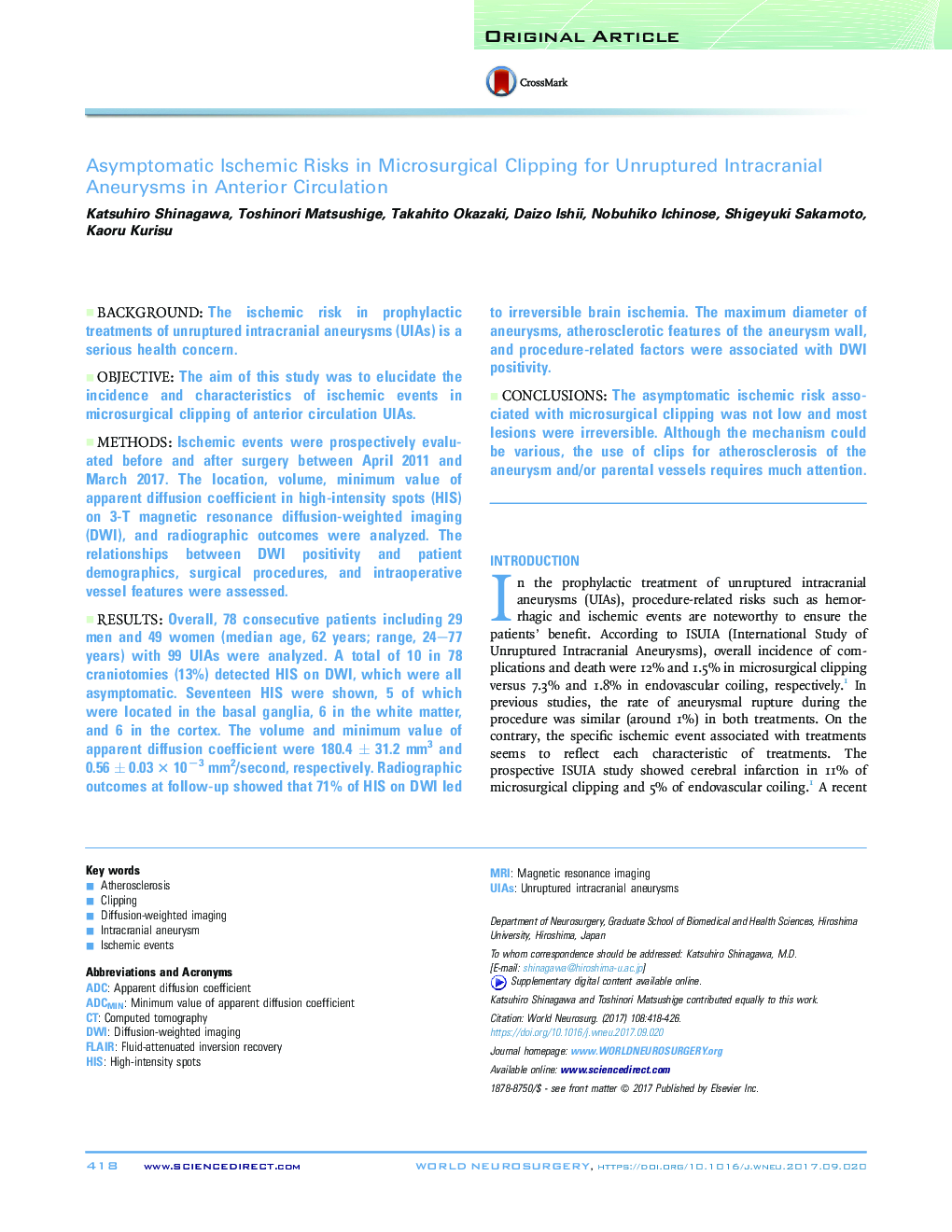| Article ID | Journal | Published Year | Pages | File Type |
|---|---|---|---|---|
| 5633788 | World Neurosurgery | 2017 | 9 Pages |
BackgroundThe ischemic risk in prophylactic treatments of unruptured intracranial aneurysms (UIAs) is a serious health concern.ObjectiveThe aim of this study was to elucidate the incidence and characteristics of ischemic events in microsurgical clipping of anterior circulation UIAs.MethodsIschemic events were prospectively evaluated before and after surgery between April 2011 and March 2017. The location, volume, minimum value of apparent diffusion coefficient in high-intensity spots (HIS) on 3-T magnetic resonance diffusion-weighted imaging (DWI), and radiographic outcomes were analyzed. The relationships between DWI positivity and patient demographics, surgical procedures, and intraoperative vessel features were assessed.ResultsOverall, 78 consecutive patients including 29 men and 49 women (median age, 62 years; range, 24-77 years) with 99 UIAs were analyzed. A total of 10 in 78 craniotomies (13%) detected HIS on DWI, which were all asymptomatic. Seventeen HIS were shown, 5 of which were located in the basal ganglia, 6 in the white matter, and 6 in the cortex. The volume and minimum value of apparent diffusion coefficient were 180.4 ± 31.2 mm3 and 0.56 ± 0.03 à 10â3 mm2/second, respectively. Radiographic outcomes at follow-up showed that 71% of HIS on DWI led to irreversible brain ischemia. The maximum diameter of aneurysms, atherosclerotic features of the aneurysm wall, and procedure-related factors were associated with DWI positivity.ConclusionsThe asymptomatic ischemic risk associated with microsurgical clipping was not low and most lesions were irreversible. Although the mechanism could be various, the use of clips for atherosclerosis of the aneurysm and/or parental vessels requires much attention.
